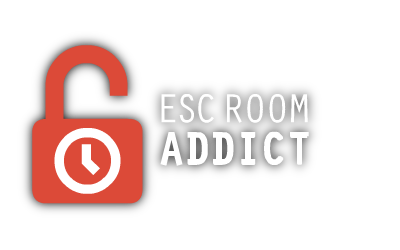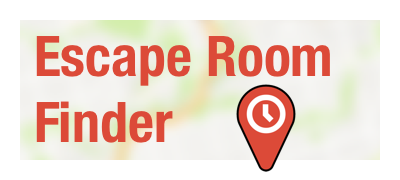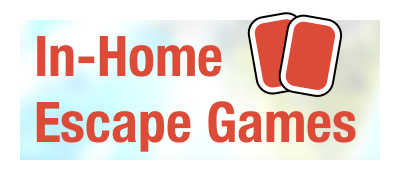Trip 1907: Forbidden Mine
- What People Say
In early 2018 Giorgos Kiafas released “Trip 1907”, his first in a series of escape puzzle books designed in the same style as other popular titles like “Journal 29” and ‘’404”. After receiving some good traction in the market, he went on to create a second book in the series ‘’Trip 1907: Forbidden Mine’’. Naturally, it somehow made sense for our team to play the second book first. No worries though, the stories of the two books aren’t connected apart from their title (and perhaps the year in which their stories take place in). We moderately enjoyed Journal 29’s two escape puzzle books, but would Trip 1907: Forbidden Mine be able to learn from the pros and cons of another series and improve upon the experience to give players something more? Let’s take a look at see what our ERA team thought…
The component quality is pretty much what you’d expect. You get a soft-cover book, designed to resemble a mysterious journal written by a Russian miner in the year 1907. The book contains a collection of puzzles, drawings, story sections, and an interactive webpage where you’ll input your answers and/or receive hints if you need. All in all, fairly standard stuff for this type of genre, and nothing we haven’t seen before. One aspect we did enjoy was the quality of the artwork. It was created in pencil sketch form, but did a good job of carrying the overall mood & tone of the book, but we’ll go more into that in our discussion on immersion.
It should come as no surprise, the puzzles are the meat and potatoes of this book. We had five different ERA members and guests playing this book at different points in time, ranging in age from 14-50 years, and in experience level from moderate enthusiast to die-hard puzzle enthusiasts. In each case everyone walked away from the book enjoying the puzzles for different reasons. Some of us enjoyed the difficulty level of the puzzles and how it seemed appropriate for all ages. Some of us appreciated the complexity of puzzle design (requiring players to think laterally, creatively, and in multi-step patterns). Others enjoyed how inclusive the puzzles were when they had a group of two or three people together. One person on the team described the puzzles as a “More approachable version of a typical escape puzzle book.’’ The puzzles are directly linked to the story of the book, and are linear in nature. You can occasionally flip through the book to skip a puzzle, but eventually you’ll need to double back as several puzzles require a previously obtained password. The strict confines of the linear format can be a little frustrating as the hint system (and discussion forum on their website), won’t always be an immediate help. In most cases the hints were enough for us, but from time to time we needed to use the forum discussion because we didn’t fully understand what the puzzle was requiring. One thing we’d like to see introduced to this genre (not just in the Trip 1907 series, but in all escape puzzle books) is the inclusion of some team-building puzzles. It won’t be easy to creatively include these, but it would add another layer of interaction and enjoyment (especially for those who enjoy solving puzzles in teams like we do)! There’s a total of fourty-five puzzles in the book, and it took each of us an average of four hours to get through it all. Another design aspect which needs to be applauded, is that Forbidden Mine doesn’t require you to destroy the book! It can be passed along for another person to play after you’re done. We appreciated this because there are so many game designers who get into this industry, not for the enjoyment of others, but to make money (and it usually shows). In this case Giorgos Kiafas did a great job of making sure his puzzles can be enjoyed by many people time and time again.
The immersive aspects of the book created a bit more debate amongst our team. Even at its best, we know that immersion is highly dependent on people’s personal preferences, style, and character. So if you’re the type of person who doesn’t enjoy sitting around brainstorming with others, then obviously playing this book in a group where you build off each other’s ideas and suggestions isn’t going to work well. And that’s ok also, because some people may enjoy it more as a solo game. We enjoyed working as a team (we always enjoy playing with our team!), so having 2-3 people at a time helped us stay connected to the story and puzzles. To some degree this involves personalities who enjoy using their imaginations and having the ability to put themselves ‘in the moment’. So what did we enjoy about the immersive aspects of Forbidden Mine? Well to start, everyone liked the story. It was creative, presented in an interesting format, and hallelujah, it was even developed THROUGHOUT the whole book (we’re FINALLY seeing more designers use proper story development!) One of the common complaints you’ll hear from escape room and puzzle enthusiasts is how much they hate reading large blocks of text, and it’s interesting how Forbidden Mine gets around this. Each puzzle has a short snippet of the story attached along with it for fast, easy reading in order to follow along. But, this is a journal from a Russian miner remember? So thankfully the miner included a more detailed notes section at the back of the book for you to read through the adventure with more in-depth notes for those who would prefer a more detailed story. Clever indeed, and it gives you the choice on whether you want to experience Forbidden Mine more as a story, or more as a puzzle book. At first we found it a bit awkward, but as we went along we found we really enjoyed having the option. Some of us would frequently turn to the back to read more story, whereas others didn’t really bother. The story is also presented in a manner that makes sense if you consider the miner’s slow decent into madness. At the beginning of the journal his writing is clear, precise, and fully detailed… but by the end of the story, his writing is more erratic, hard to understand, and clearly meant to leave us wondering ‘’What the heck is going on here?!’’. For some who can easily immerse themselves into the character, this is a fun read. For some others on our team they found it frustrating because it gets harder to follow the story and feel connected. All in all the team agreed there’s some good immersion to be had if you’re the type of person who can get invested into a character through reading.
So did we enjoy the book? Yes. Would we recommend it? Well it depends on a few factors. If you enjoy immersing yourself into a fantasy (or nightmare) that involves puzzles, reading and being creative… then Trip 1907: Forbidden Mine is for you. It’s approachable enough for new players, and challenging enough for experienced puzzle solvers. There is some questionable subject matter and imagery, so we’d suggest limiting exposure to ages 13+. And to eliminate any frustration, we’d also suggest a maximum of 2-3 players if you only have one book. We enjoyed brainstorming through the puzzles, but the occasional mistranslation (and/or misspelling) within the book makes it necessary to use the hints and forum discussion, so make sure you have those web-pages bookmarked when you start… And now it’s onto the original Trip 1907 to see if it’s the same as Forbidden Mine!
We want to hear your thoughts on this game! Be sure to comment in the section below or send us a message via ERA’s email, Facebook, Instagram, YouTube, or Twitter… As always, happy escaping!
Final Verdict: | 6.6/10 |





